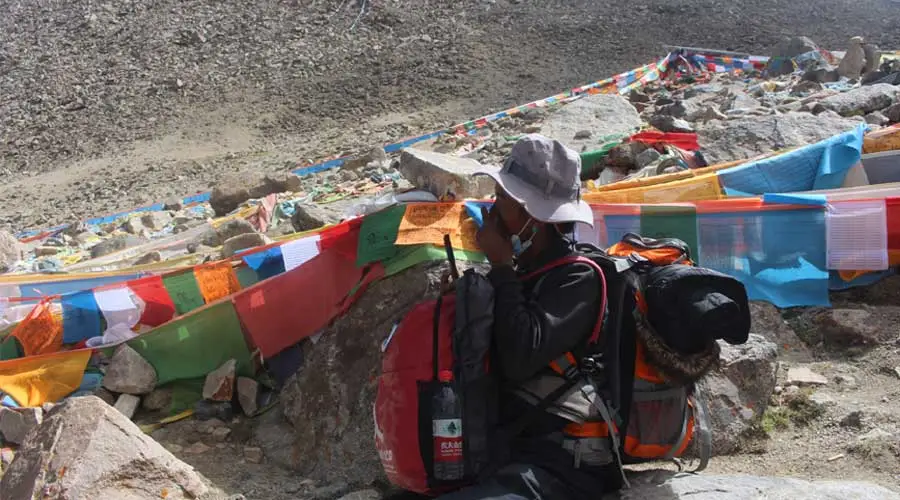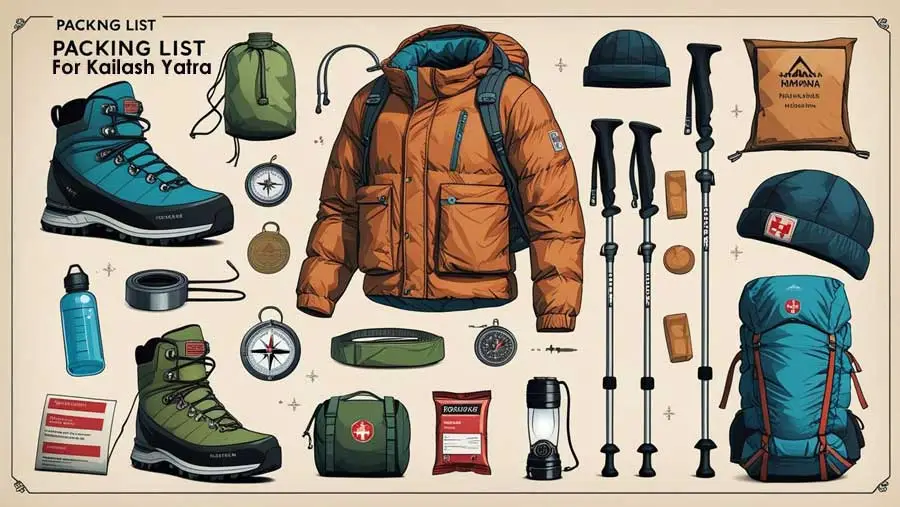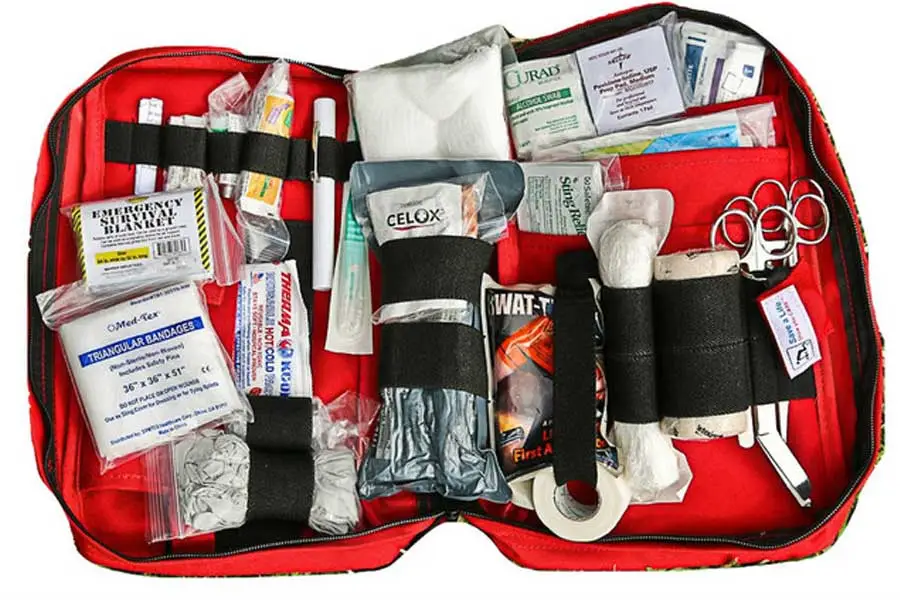Kailash Mansarovar Yatra is not a trekking trip; it is a spiritual journey that changes one’s life. It is the wish of millions of pilgrims around the world who dream of getting a glimpse of the divine Mount Kailash and taking water from the holy Mansarovar Lake into their souls.
However, Kaialsh Mansarovar Yatra should be taken with preparation and discipline, and respect. Information on what should and what must not be done can tell the difference between a trouble-free and a troubled Yatra.

To make your trek as straightforward as possible, we have drawn an easy list of do’s and don’ts of Kailash Mansarovar Yatra.
These few guidelines will ensure you get the beauty, spirituality, and peace that this reverence pilgrimage must provide.
Do’s of Kailash Mansarovar Yatra
A Yatri is supposed to follow some important guidelines to make their journey safe, spiritual, and unforgettable. To be better prepared, we have enumerated the following do’s for Kailash Yatra.
These casual rules will ensure that you are healthy, respectful, and ready to be in the trip. Reading them makes you have the best possible experience in the yatra.
1. Bring All the Necessary Documents
Visiting Kailash Mansarovar is not something that you can just carry a bag and pack then set off. You must cross over international borders, and therefore, you need to bring your passport, Chinese visa, yatra permit, and medical clearance documents.

In their absence, you will not have permission. It is good to have at least two copies of every document separately in a bag.
Others even scan their documents and back them up in their phone or email. Such minor cautions may save you a lot of bother in case the originals are lost.
2. Adapt to the Elevation
The Yatra moves you to altitudes higher than 4,500 meters, where there is nearly 40% less oxygen as compared to sea level. Without adjusting your body, you could experience dizziness, nausea, or shortness of breath.
To prevent this, do not make a direct rush into the trek. Overnight in towns such as Taklakot or Darchen to have rest.

Rest during the first few days, walk lightly and have access to warm water, and do not engage in much physical activity. The trick is to acclimatize properly so that the yatra is enjoyable and risk-free to health.
3. Dress in Warm and Comfortable Clothing
Tibet has very unpredictable weather. The mornings may be sunny and cloudless; however, in the evenings, it will be so cold with high winds. Put on more clothes in layers that you can either put on or take off to adjust to the temperature.
Handy items include thermal wear, a woolen cap, gloves, and a good-quality down jacket. Above all, buy strong, waterproof and good grip trekking shoes since the pathways are rocky and slippery.
Getting it right in terms of proper dressing not only keeps you at a comfortable level but also helps you avoid falling ill because of changes in weather.
Read more about what to carry for Kailash Mansarovar Yatra
4. Respect Local Culture and Traditions
Kailash Mansarovar is more than a destination, as it is a pilgrimage for many people. It is also expected to be the residence of Lord Shiva, and has religious significance to the Buddhists, Jains, and Bon religionists.
When traveling, do not speak or shout around sacred places, and never take pictures of local people or even monasteries without consulting.
Simple things like inclination, circling around sacred grounds in the clockwise direction, or performing a prayer can enhance your experience to be spiritually rewarding.
Be careful, respect will gain respect, and being sensitive to the local culture will establish peace.
5. Keep Medications and First Aid Kit
The journey to Kailash Mansarovar is long, and there are only few health care facilities. Even trivial medical issues can become serious if they fail to receive appropriate attention.
Be sure to bring your own medications, especially in the event you have problems like high blood pressure, diabetes, or asthma.
In addition, carry a typical first aid brace of dressings, antiseptic cream, pain spray, oral rehydration solution and tubes, and medication against altitude sickness (Diamox, with the doctor’s consent).
The availability of them leads to the feeling of peace and relief, and it enables one to resolve minor problems in the state of not being panicked.
6. Stay hydrated and light up on food
As one increases in altitude, the body is more prone to loss of water and dehydration increases the chances of having altitude sickness. Consume lots of warm water as regularly as you can, with or without feeling thirsty.
Bring a thermos for drinking warm water. Taking light and easy foods like soup, rice, or cooked vegetables, as far as food is concerned.
Food that is either oily, spicy, or very heavy should be avoided as they are difficult to digest during a low oxygen condition. Naive eating keeps your body very energized, and you trek without difficulty.
7. Maintain Your Guide and Group Guidance
Your guide is the best source of help and information during the yatra. They are familiar with the path, risk, and the local culture.
You should always be attentive to their instructions concerning the pace of walking, rest points, and safety precautions. Do not even attempt to go ahead of the group or to cut shortcuts in the company.
The terrain is unknowable, and errors potentially deadly. The key thing is to stay with your group and to stick with your guide; this is both safe and a smoother journey.
8. Pack Smart and Carry Essentials Only
It is a physically exhausting trip, and therefore, pack as light as possible. Rather than trying to overpack, create a list of necessities that includes warm clothes, medicines, trekking shoes, toiletries, torchlight, and a power bank.

Choose a well-supported, sturdy backpack that does not put pressure on the shoulders.
Suppose you have porters or yaks; then carry only the smallest of essentials in your day pack and send the rest with them. Smart packing affordably lightens your burden, and waltzing becomes a lot easier.
9. Keep Travel Neat During the Trip
The area of Kailash and the lake of Mansarovar is not only naturally beautiful but also a very spiritual one. It is upon us to make it clean. Eliminate the waste materials properly and do not discard any material open, like plastics and wrappers, or bottles.
On the backpack, you should take a small garbage bag with you to gather your own waste, then pass it to the right place of disposing of it.
Cleaning up the surroundings not only means that you are treating nature well but also conserving the sacredness of this sacred place on behalf of other pilgrims to come.
10. Prevent Altitude Sickness
One of the greatest problems of the yatra is altitude sickness. The most optimal solution to handle it would be to be cautious at the onset itself.
Also, walk slowly, take rest when you become fatigued, and do not overstrain. Avoid consuming alcohol and smoking, which diminish the capacities of your body to deal with low oxygen.
In case you see such early signs as a headache, poor appetite, or difficulties in breathing, it is your responsibility to tell your guide about it. Taking adequate measures, the yatra can be undertaken safely and in peace.
Our Suggestions for how to avoid altitude sickness during Kailash Mansarovar Yatra
Don’ts of Kailash Mansarovar Yatra
Although this may sound very easy, there are some things you should not do on your way to a safe and fulfilling yatra.
We have listed the main don’ts that should be kept in mind by Yatri below. Sticking with them will help you go through the trip without trouble.
1. Do Not Neglect Your Medical Conditions
The Kailash Mansarovar yatra is physically challenging and is conducted in very high-altitude places. It may be dangerous to you in case you have heart disease, severe asthma, or lack of control of blood pressure.

You should always visit your doctor and have him apply to the yatra. Health denial and overworking yourself may become hazardous. Adventure should never be prior to safety.
2. Avoid throwing Garbage or polluting the Environment
Kailash and Mansarovar Lake are sacred places. It is very disrespectful and bad to the environment to chuck plastic bottles, food wrappers, or any waste, open.
Always bring along with you a small bag to put your trash in and dispose of it in to appropriate disposal areas. Cleanliness of the environment is your responsibility as a pilgrim.
3. Do Not Desecrate Religious Places
There is immense spiritual significance in the Mansarovar Lake and other temples, monasteries, etc. No loud noise should be made, touching sacred objects, nor photographs where not permitted.
Lots of pilgrims engage in rituals and prayers, be diplomatic, and observe silence. Respect is a means to honor the sanctity of the journey.
4. Don’t Rush the Trek
Making a rush during a parikrama (of circumambulation of Mount Kailash) or rushing during the walk may tax your body without the necessary need.
Altitude trekking needs slow and gradual steps. Hurry may lead to altitude illness or trauma. It is not a race; it is a spiritual journey.
5. Do Not Carry too many Valuable Items
Do not carry expensive jewelry, large amounts of money, or gadgets you do not need. The ground is uneven, and it is quite normal to lose such things.
Take with you just the things you require, a little money, some simple electronics, and your documents. Having fewer and secure items will help the journey be free of stress.
6. No Violation of Permits
The Chinese government strictly controls visits to Kailash Mansarovar. You must take the path identified in your pass.
Do not attempt to enter prohibited sections or get shortcuts. These rules can not only get you into trouble but also your whole group as well. Follow the rules to make your trip pleasant.
7. Do not Drink Alcohol or Smoke
Alcohol and smoking impair the capacity of your body to absorb oxygen, which is already restricted at high altitudes. Alcohol consumption or cigarettes puts you at a height sickness risk as well as makes you feel weak.
Also, alcohol does not treat a sacred place like Kailash with reverence. Be clean and sober to be spiritually and physically healthier in your experience.
8. Don’t Miss Weather Warnings
It is a phenomenon to have the weather in Tibet change in minutes, from sunshine to snowstorms. In case you are told by your guide not to walk further or take a rest due to unfavorable weather, do so as soon as you can.
Failure to consider the weather can cause someone to be involved in accidents or be stranded in dangerous places. Never disobey the power of nature.
9. Don’t Wander Alone
You would think you can take a walk and head somewhere; however, the routes are far away and can be confusing. It is unsafe and stressful to get lost in your group.
Never cross with the guide or fellow yatris out of sight. It is safer as well as more enjoyable to walk together.
10. Do not destroy nature and wildlife
The Kailash and Mansarovar area possesses many rare plants and wild animals. Heel-trampling, picking flowers, flattening plants, and otherwise disturbing wildlife should be avoided.
Handle nature in the same way as the sacred places. Keep in mind that the beauty of the yatra is to be found in its pristine purity.
Send an Enquiry
Error: Contact form not found.
© 2025 - Himalayan Trekking and Tours (P) Ltd. All Rights Reserved.

